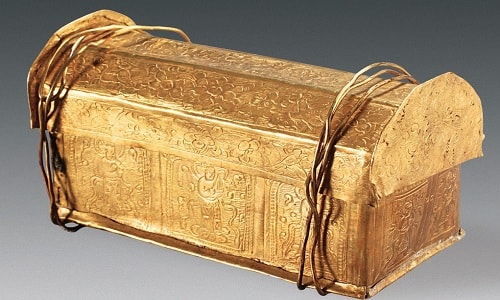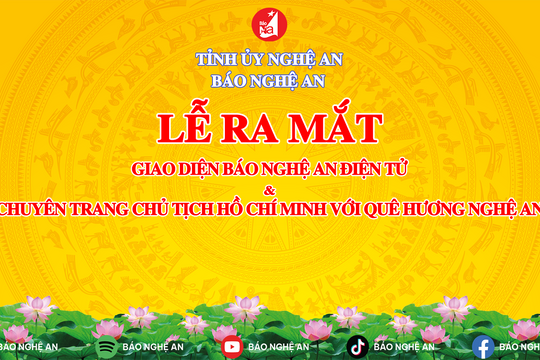Tiny golden coffin may contain fragments of Buddha's skull
Archaeologists have discovered a skull fragment that likely belongs to Buddha Shakyamuni buried in a very small golden coffin hidden in an underground tomb.
 |
The elaborate golden coffin containing the Buddha's skull. Photo: Chinese Cultural Relics. |
According to Live Science, the skull fragment is hidden inside a 1,000-year-old model of a burial tower. The tower is placed in an iron box inside a stone chest in a tomb at the foot of the Liu Li Tower at the Dai Bao An Temple in Nanjing, China. Inscriptions on the chest confirm that the skull fragment is part of the Buddha's remains.
The pagoda is exquisitely designed, made from sandalwood, gold and silver, and covered with precious stones made from glass, crystal, agate and lapis lazuli. It is 117 cm high and 45 cm wide. According to the inscription on the outside of the stone chest, the pagoda containing the remains was built during the reign of Emperor Zhenzong of the Northern Song Dynasty (997-1022). The inscriptions on the pagoda include the names of those who donated money and materials for the construction, as well as the names of some of the builders.
A team of archaeologists from the Nanjing Institute of Archaeology excavated the tomb between 2007 and 2010, assisted by experts from other institutes in China. Details of the discovery were published in Chinese in the journal Wenwu in 2015 before being translated into English in the journal Chinese Cultural Relics.
Archaeologists are still unsure whether the skull fragment actually belonged to the Buddha. However, the bone fragment, which is kept at the Thê Hà Temple in Nanjing, is still revered by monks.
The inscription on the stone chest was written by monk Duc Minh, who called himself "the almighty enlightener, abbot of Thua Thien pagoda and wearing purple robes" and stated the origin of the Buddha's skull fragment.
See more pictures of the coffin containing Buddha's skull here >>>
According to Venerable Duc Minh, after the Buddha entered nirvana, his body was cremated near the Hirannavati River in India. The then Indian emperor Ashoka (reigning from 268 to 232 BC) decided to preserve the Buddha's remains by dividing them into a total of 84,000 parts. China was given 19 parts, including the skull fragment.
The skull fragment was kept in a temple that was destroyed by continuous war 1,400 years ago. "The remains of the temple's foundation are scattered on the lawn. In times of turmoil, it seems that no one cares about Buddhist affairs," wrote monk Duc Minh.
Emperor Jinzong agreed to rebuild the temple and decided to bury the Buddha's skull and the remains of other Buddhas in an underground tomb at the temple. The burial ceremony was held on July 21, 1011, with the most solemn and elaborate rituals.
According to archaeologists, the Buddha's skull fragment was placed in a tiny gold coffin. This coffin was placed in another silver coffin. The silver coffin was then placed in the stupa containing the relics.
Small gold and silver coffins are decorated with lotus motifs, phoenixes and sword-wielding deities. The coffins also have images of Apsara goddesses playing musical instruments on their surfaces.
The Buddha's skull fragment was placed in a golden coffin along with a crystal vase and a silver box. All of these contained the remains of other Buddhist Buddhas.
The surface of the stupa contains relics carved with many images of Buddha along with scenes depicting stories about Buddha's life from his birth until his nirvana.
According to VNE
| RELATED NEWS |
|---|

.png)






